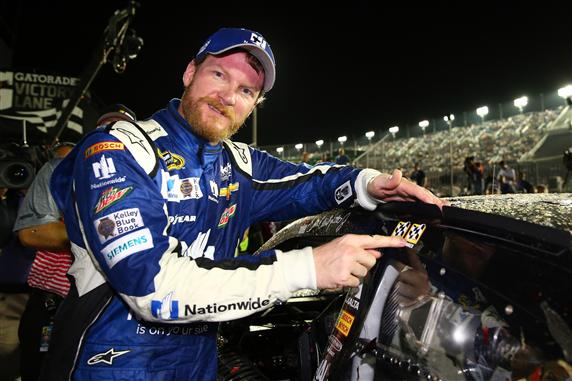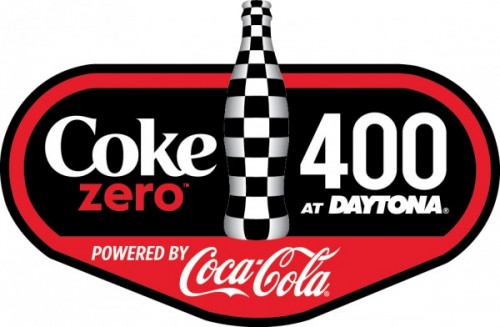“That scared the hell out of me.”
With those post-race words, race winner Dale Earnhardt Jr. summarized exactly how every fan felt as they watched the end of the Sunday night/Monday morning race at Daytona. That track. That team. That car number. That wreck as they came to the line was scary and, until we saw those upraised thumbs of all those crewmen who had raced onto the track to lend assistance, we all feared what we may have just witnessed.
It took three hours to outlast the rain, but it was worth every moment, from a fan’s perspective. The action was incredible as those 3400-pound machines thundered around in close formation at more than three times highway speeds. We had wrecks, including one that caused Aric Almirola to tumble out of a Chase place, allowing Clint Bowyer to slide in. We saw Kyle Busch scrape the wall, lose a couple of laps, yet dig down to finish 17th. In his bid to move up into the Top Thirty on the season, so his win at Sonoma might count for a pass to contend for the title, he only made up eight of the 136 point gap, with just nine events to go before the Chase spots are finalized.
We watched to see if we would have a repeat winner or if a new victor might take it to complicate someone’s race to the Chase. We soon discovered that Junior had come home, as he demonstrated all his superspeedway talent to drive at 200 mph while watching his mirrors and blocking the lines that moved up to challenge him. It marked his second of the season and 25th of his Cup career. Then all hell broke loose.
As they hit the line, Kevin Harvick touched the left rear of Denny Hamlin. It was enough to allow Jimmie Johnson to claim second as Hamlin’s car whipped around counter-clockwise and speared the following No. 3 Chevy of Austin Dillon. Combining the angle of the hit, the speed of the cars, and aerodynamics, Dillon’s car launched from the inside lane over the next two for a terrifying impact above the wall, directly into the catchfence.
Two posts snapped, the catchfence disappeared, but the cables held it all together long enough to abruptly stop the car’s momentum and return it, in pieces, back to the track. Dillon’s engine bounced unattached into the grass on the infield, as what was left of the shattered chassis spun back on the track upside down, with no nose, no back end, and just three tires. Then Brad Keselowski slid hard into it to make beating hearts beat that much faster.
Crews, led by Earnhardt’s, rushed on to the track to lend immediate assistance, beating all emergency personnel to the scene. They bent down to check into the cockpit. Agonizing seconds later, they stood, thumbs raised up to indicate our worst fears were not to be realized on this day. Three fans were injured, one taken to hospital in stable condition. Considering that the car hit the fence wheels first and stayed out is almost a miracle.
If only all races promised this kind of action. There are those who dwell on the dangers, and I must admit that my first automatic response would be to tell them to “go to hell.” If you pay to go, if you pay to sit anywhere near the fence, if you sit anywhere anything can be flung from a crashing car to reach where you sit, you better realize there is inherent danger just being there. Maybe as much as that flight to Orlando, or the car trip to Daytona Beach. But…
As one driver noted, what if two cars get launched? What if they arrive a split second apart? What is there is no longer a viable catchfence left to catch that second car? NASCAR, in fact, no form of motorsport, needs another Le Mans tragedy, which claimed the life of a driver, 83 spectators, and injured 120 more in a 1955 inferno.
There is a reason you do not see seats right up to the fence. Still, if you can see through the fence, some car parts can make it through to you. I think fans know this, understand this, but all that knowledge and understanding goes out the window should tragedy strike. All they can do is try to reduce the risk,
Daytona, this past weekend, proved to be damned exciting, as exciting as it gets, but it comes with risk, and it is shared by drivers, teams, and fans alike. A risk that can be reduced, but never totally eliminated. Everybody needs to know that.







